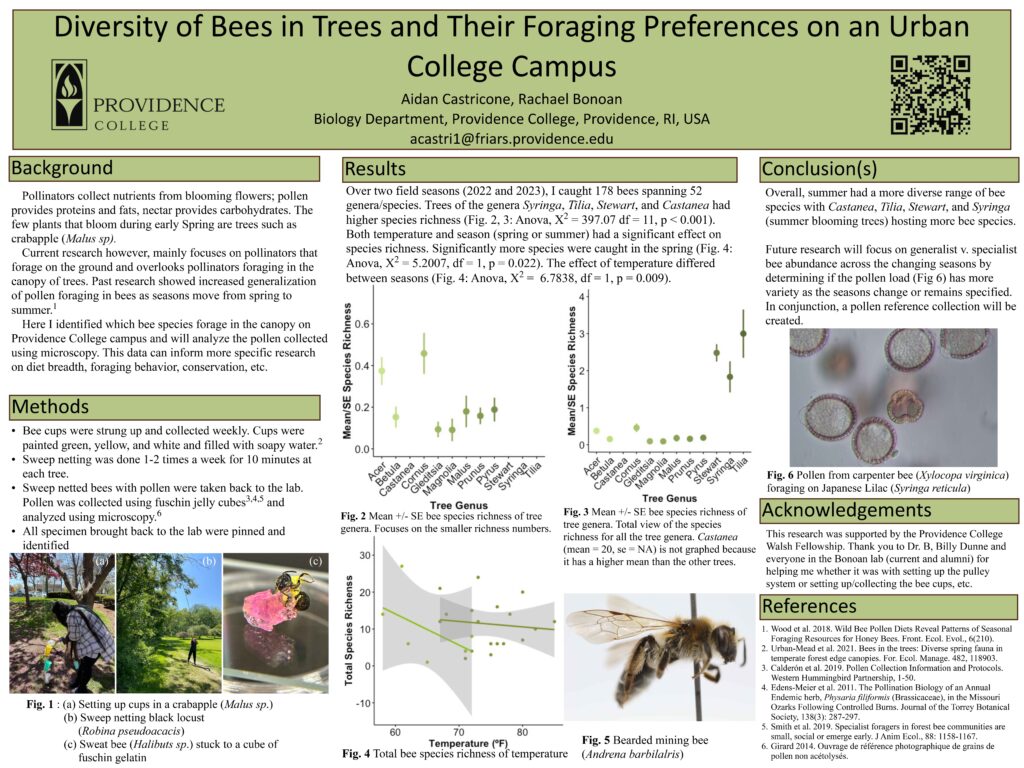Aidan Castricone ’24

Diversity of Bees in Trees and Their Foraging Preferences on an Urban College Campus
Aidan Castricone ’24, Environmental Biology major
Faculty Mentor: Dr. Rachael Bonoan, Biology
Poster Presentation: Wednesday, April 24, 11 a.m. – 12:30 p.m.
It is well known that insect pollinator populations are declining and a lack of nutrients (i.e flowering plants) may be a contributor to this decline. Insect pollinators forage for pollen and nectar, which provides proteins, fats, and carbohydrates, from flowering plants. Trees such as Acer rubrum (Red Maple) and Malus sp. (Crabapple) bloom early in the spring, before any of the perennials and forbs. Thus trees are likely one of the only places that early-emerging bees can find food. Past research has shown that during the seasonal transition from spring to summer, when more food becomes available, bees became more generalized in their pollen foraging. On Providence College campus, I studied bees foraging in trees using two different sampling methods: bee cups strung up via a pulley system and sweep netting. I studied their pollen foraging preferences using microscopy. Pinned specimen will contribute to the Providence Pollinators reference collection and inform on-campus tree management for pollinator conservation.






